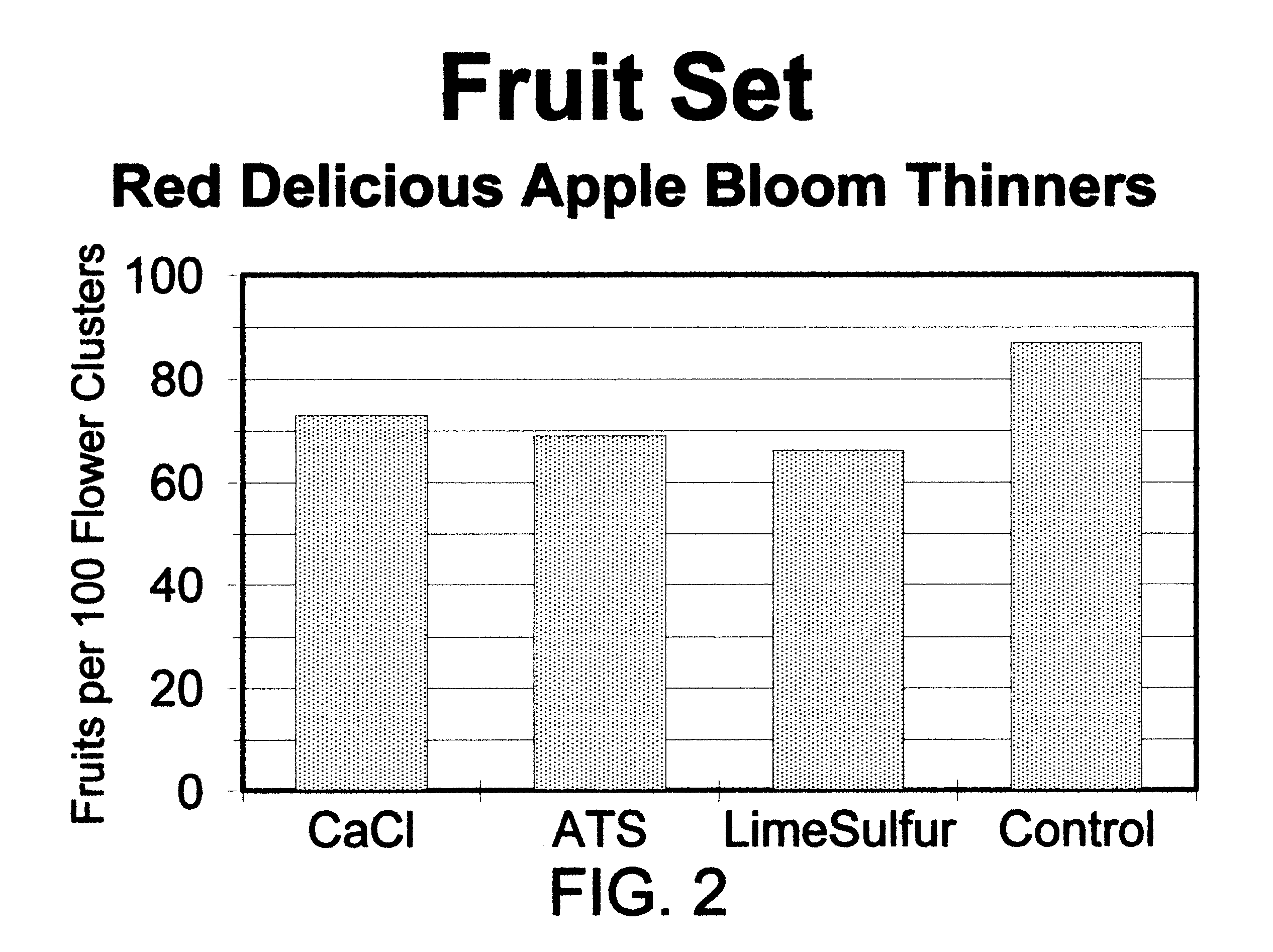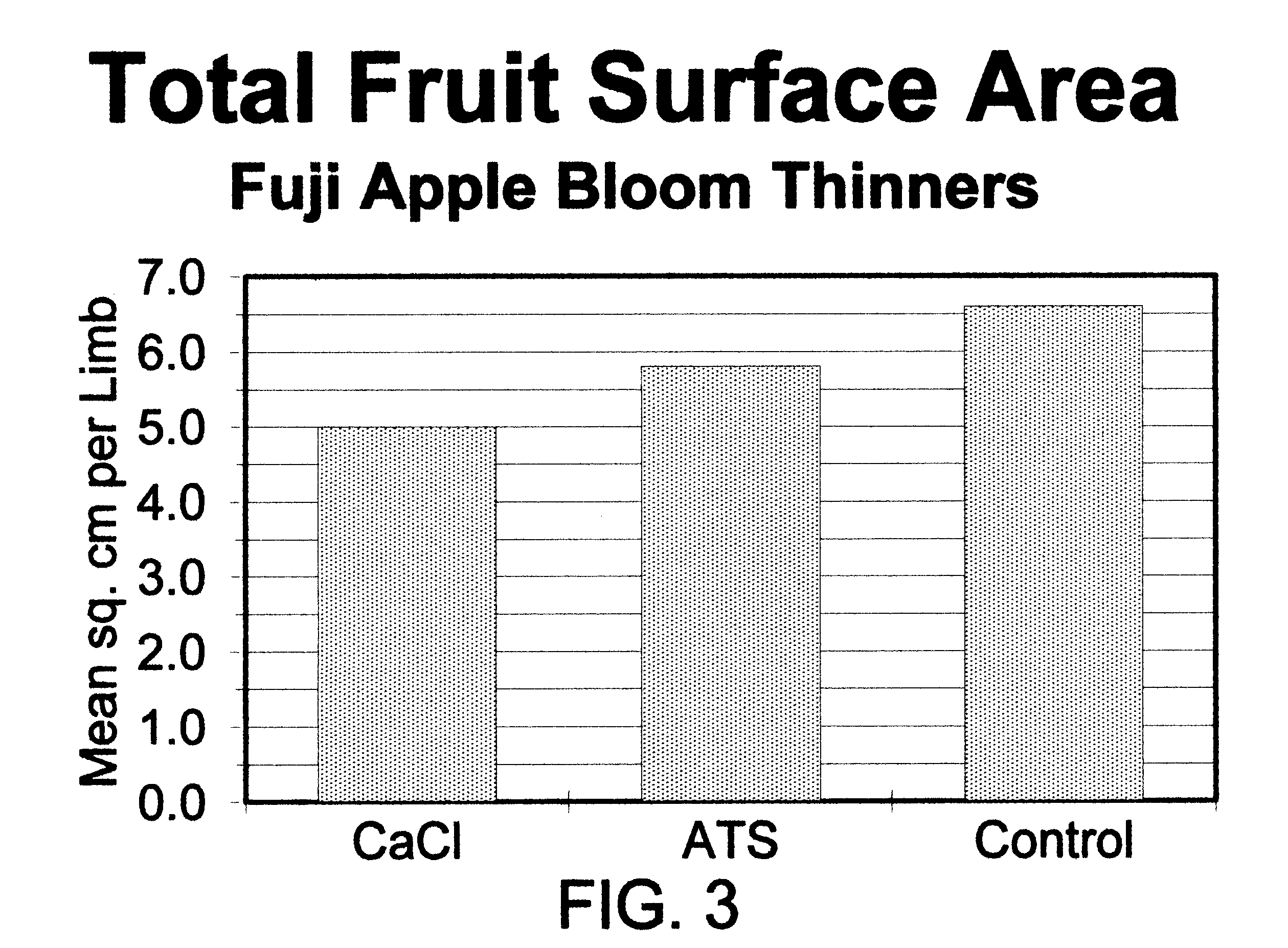Calcium chloride fruit blossom thinning agent
a technology of calcium chloride and fruit blossom, which is applied in the field of thinning fruit blossoms, can solve the problems of low quality fruit, low fruit yield, and high cost, and achieves the effects of increasing fruit size and color, and reducing the number of fruits
- Summary
- Abstract
- Description
- Claims
- Application Information
AI Technical Summary
Benefits of technology
Problems solved by technology
Method used
Image
Examples
example 1
A first field trial to test the effects of calcium chloride as a bloom thinning agent was performed in an orchard located in East Wenatchee, Washington, by the Washington Tree Fruit Research Commission on a commercial block of a Fuji apple cultivar of the variety "WVC." Two areas of the block's apples were each treated with two alternative chemical thinning compounds. Calcium chloride was used in the first area. Ammonium thio-sulfate (ATS) was used in the second area. A third area of the apple block was utilized as a control group and treated with water. The treatments were all performed with conventional test methodologies and procedures.
Other than the application of the thinning compounds, all three blocks were managed without differentiation. All treatments were applied utilizing standard airblast sprayers and spreader-stickers as appropriate. The experiments were in a randomized complete block design with 2 to 4 replications. Both ATS and calcium chloride treatments showed simil...
example 2
A second field trial to test the effects of calcium chloride as a bloom thinning agent was performed at an orchard located in Azwell, Washington, by the Washington Tree Fruit Research Commission on a commercial block of a Red Delicious apple cultivar of the variety "Lutz." Three areas of the block's apples were each treated with one of three alternative chemical thinning compounds. Ammonium thio-sulfate was used in the first area. Calcium chloride was used in the second area and "Crocker's" lime and sulfur was used in the third area. A fourth area of the apple block was utilized as a control group and treated with water as a control. The treatments were all performed with conventional test methodologies and procedures. Other than the application of the thinning compounds, all four blocks were managed without differentiation. Results of this second trial are listed in TABLE 2 and shown in the graphs of FIGS. 2 and 4. The results of the trial are reported in an industry standard forma...
PUM
 Login to View More
Login to View More Abstract
Description
Claims
Application Information
 Login to View More
Login to View More - R&D
- Intellectual Property
- Life Sciences
- Materials
- Tech Scout
- Unparalleled Data Quality
- Higher Quality Content
- 60% Fewer Hallucinations
Browse by: Latest US Patents, China's latest patents, Technical Efficacy Thesaurus, Application Domain, Technology Topic, Popular Technical Reports.
© 2025 PatSnap. All rights reserved.Legal|Privacy policy|Modern Slavery Act Transparency Statement|Sitemap|About US| Contact US: help@patsnap.com



